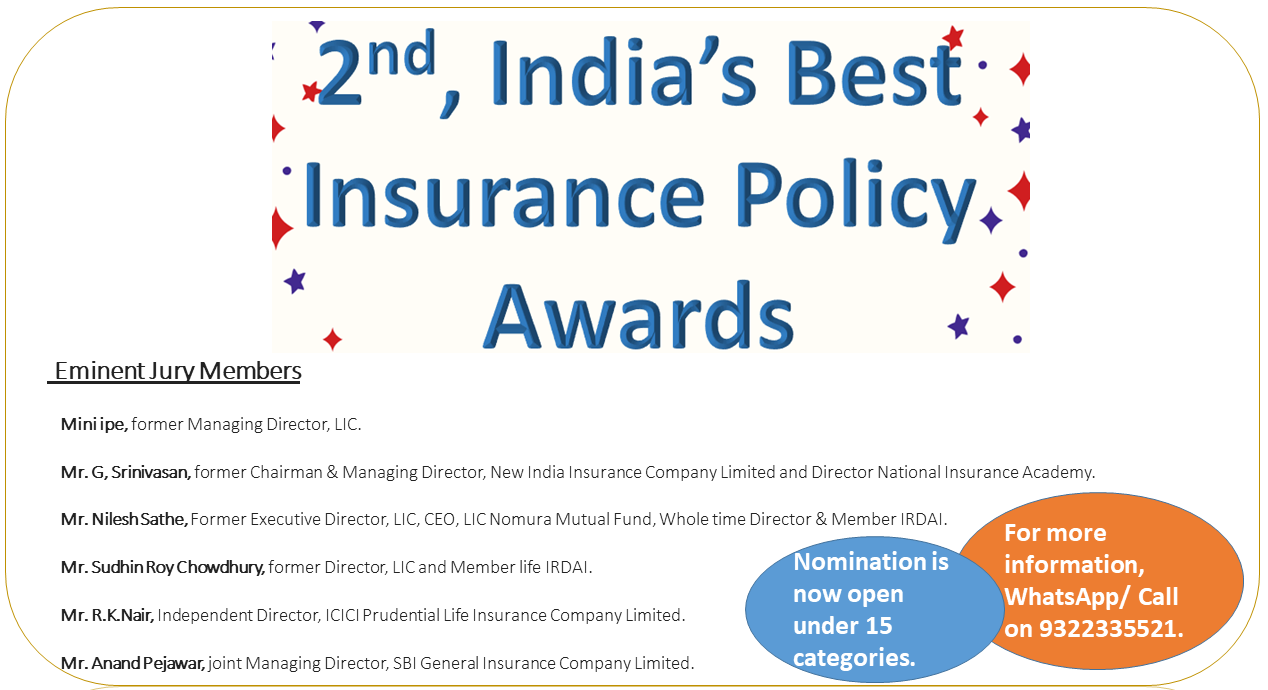 31-10-2023
31-10-2023
By Dec-end, India set to showcase a workable insurance claims exchange
-2023-10-31-6-954.jpeg)
 Insurance Alertss
Insurance AlertssBy Dec-end, India set to showcase a workable insurance claims exchange
Discharging a patient from a hospital has always been about tedious paperwork and long hours spent staring at the clock. There is reason to believe that much of this could change. In the next two months or by the end of this calendar year, the country may well be able to demonstrate a workable health insurance claims exchange.
“We hope that in the next two months we will be able to demonstrate a workable insurance claims exchange,” says Dr Basant Garg, mission director, Ayushman Bharat Digital Mission (ABDM) and the additional CEO at the National Health Authority (NHA).
Called the National Health Claims Exchange or NHCX in official parlance, it is a digital deliverance of sorts, that could sharply cut down both the time spent and the cost incurred in insurance claims processing. Put in place by the National Health Authority (NHA), the NHCX is a digital public health infrastructure to link up the entire health insurance eco-system to enabling a seamless processing of health insurance claims.
Sandbox stage
Currently, in a sandbox stage, the NHCX took a major step in this direction between October 25th and 27th, when the insurance companies and the TPAs (Third Party Administrators) were able to demonstrate that they could electronically receive and send the claims and get ready for the next stage of processing it and this involves getting the standardisation in place.
The exchange will be introducing standards for claims filing by the hospitals. “Each hospital would have to meet certain standards and these would be pretty simple international standards like LOINC codes for laboratories, similarly standards for ICDs and for drugs. So, if the standardised language is used then claims will be easily identifiable and readable,” says Dr Garg. When such standardisation is in place, the details could be machine-read and processed instead of having a human read it at the other end, as is being done currently. If a diabetic patient’s fasting blood sugar results are shared in a standardised laboratory code then it only takes a machine to validate the ailment of the patient and enable the claims processing.
http://insurancealerts.in/
Earlier, in August, 29 insurance companies and 18 TPAs (47 entities in all) that make about 99 per cent of India’s insurance sector by volume took to integrating into the national health exchange. They had to log into the NHA system and start testing their integration and demonstrate that their systems were able to create ABHA (Ayushman Bharat Health Account) – the unique health IDs that are assigned to every citizen apart from unique IDs for doctors, nurses – the complete treating team as it were, with health professional ID along with unique IDs for all hospitals and laboratories. As a result, when there is a claim, there is a unique ID for all – patient and the treating team and of the hospital or the laboratory where the test happened. This will play a crucial role in checking fraudulent claims.
To understand the significance of health claims exchange it is important to understand how hospitals are filing their claims with the insurance companies at the moment. Typically, a hospital gets patients covered by different insurance companies and the hospital needs to log into the software applicable that a particular insurance company, upload the documents, usually in PDF form and the claim is filed into the individual system of that insurance company. It means logging into several softwares applicable to different insurance companies.
“The most painful aspect is that of claims processing, which is mostly manual as these PDFs get read manually and lead to back and forth emails exchanges for various reasons, including seeking clarity. All of it leading to delays in claims processing resulting in costs to all the stakeholders – patients, hospitals and the insurance companies,” says Dr Garg. Ask him about the costs involved, and he says, “today, it is estimated that the cost of one claim to be processed is around Rs 500 per claim that is typically borne by the insurance company but eventually transferred to the patient. The impact of these inefficiencies fall on the patient ultimately.”
So, with the health claims exchange, instead of all insurance companies having their individual claims professing platforms, there would be a single pipeline where claims would be sent from the hospital to the insurance company, identifiable by certain labels and the claims filed by a hospital will land only with the relevant insurance company. “So, instead of multiple softwares there will be one single gateway, which we call the National Health Claims Exchange and all the back and forth between the insurance company and the hospital will happen over this platform,” explains Dr Garg.
He also adds that all of it will also reduce the claims processing time. “If today the total processing of a claim takes 15 to 30 days or more, it will be down to minutes with machine readability. Plus, the cost of processing a claims could come down to around Rs 500 per claims to roughly around Rs 10 to Rs 12 per claim. In addition, the added comfort with standardisation will be reduction in error and containment of fraudulent claims,” he says.
OPD coverage, the biggest benefit
But the bigger benefit, he says, is that we could move insurance companies towards covering OPD. “Today, no insurance company provides OPD cover and this is for the simple reason that an average OPD claim would be for Rs 200 or Rs 300 but since the processing cost alone is around Rs 500 then servicing that OPD claim becomes an unviable proposition. But if the cost of processing is brought down to Rs 10 or Rs 15 then OPD insurance becomes viable,” says Dr Garg.
Why OPD insurance matters? Here, Dr Garg makes an important observation: “Because there is no OPD insurance, the uptake of insurance as OPD is the bulk of the reason why people consult a physician and therefore see no reason to pay for an inpatient insurance. If this taken care of then overall insurance net in the country and we will see a rise in insurance penetration in the country.” On the current rate, there are various estimates but could be at best in the region of 8 to 9 per cent, including group insurance. This, apparently is one big reason why the national claims exchange is being with the National Health Authority.
Partners in the journey
Giving a back drop to the journey towards the claims exchange, Dr Garg says, “the effort to conceptualise and design it began 8 to 10 months ago jointly done by IRDAI (Insurance Regulatory and Development Authority of India), National Health Authority with steering groups and working groups formed and comprising of several experts. “After a good amount of deliberation and because we had to experience of running the PM-JAY (Pradhan Mantri Jan Arogya Yojana), which is often referred to as the world’s largest health insurance / assurance scheme that is fully financed by the government, the lead was taken for the claims exchange with the support of the IRDAI. Using the good offices of the IRDAI, we were able to get the 47 insurance companies and TPAs on board and the IRDAI is also lending whatever support it can offer to ensure the implementation also happens,” says Dr Garg.
When the claims exchange was being conceptualised, a working group was formed with people with experience in digital health and public health roped in. They played an important role in conceptualising it. For instance, one entity that has been involved in the claims exchange since the beginning has been Swasth Alliance, a one-of-its-kind collaborative backed by industry leaders, startups, experts and public-spirited people, that leverages digital technologies to drive healthcare inclusion and for better health outcomes. “Now, when NHA will roll it out, their help as also of all the other public-spirited people and entities would again be needed to popularise it also,” says Dr Garg.
In fact, Swasth has already created a claims exchange and given the huge challenges in this hugely complex arena of claims processing, the government could leverage even the platform built by Swasth as ideally the size of the country will need more players and having two exchanges could be an ideal start.
Standardisation, the way forward
On standardisation and the possible challenges, Dr Garg explains, “the standards that we are talking of are already available and do not need to be created. All that the hospitals and insurance companies will need to do is to modify their systems and start using these standards. Once the provider and the payer start using the internationally known standards then the process can take off.” Will this not be a challenge for a small healthcare provider in a remote location of India? “It will not be a challenge for a small healthcare provider in a remote location, as it will typically be focussed on only few diseases unlike a super-speciality in a big metropolitan city and will just need checklist of standards for those few ailments that it is largely addressing in that region,” he says.
The logic is that Indians are very adaptable and even those who are illiterate are able to use QR codes today for financial transactions so once the standards are made mandatory, the adoption can be possible across the board more so because in this space there are participants who are all educated and can easily appreciate the value of standards.
Underlining the importance of ABHA, he feels, people need to log into abha.abdm.gov.in and a matter of just five minutes create their ABHA ID using the Aadhaar number. Today, 47 crore Indians out of a total of 140 crore have their ABHA. That is nearly 35 per cent of the population has ABHA and medical professionals getting their health professional ID.
With the claims exchange and the manner in which it is being articulated, some see seeds of hope for an NPCI like set up in healthcare. Much like the NPCI, which played a crucial in the digital transformation of the financial payments in the country, the claims exchange could potentially have a much deeper impact with the settlement of not just a financial transaction but also of a health issue.
Source: Financial Express
